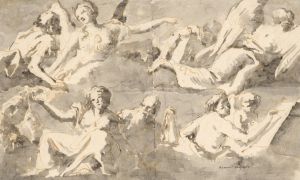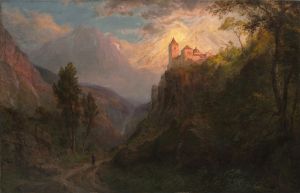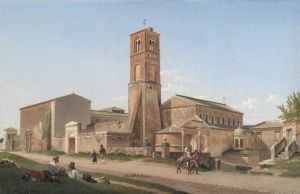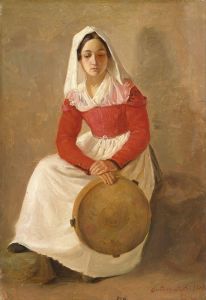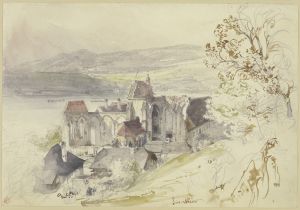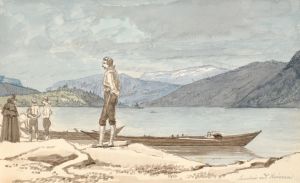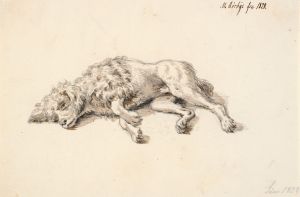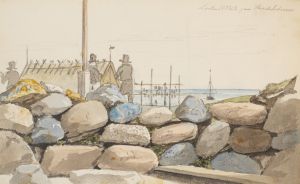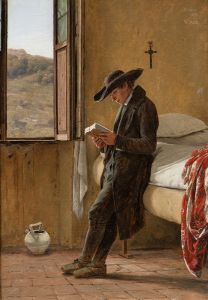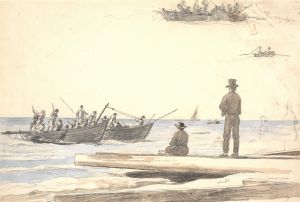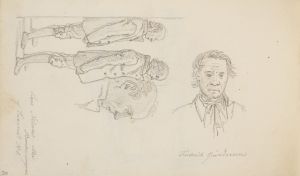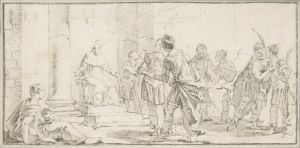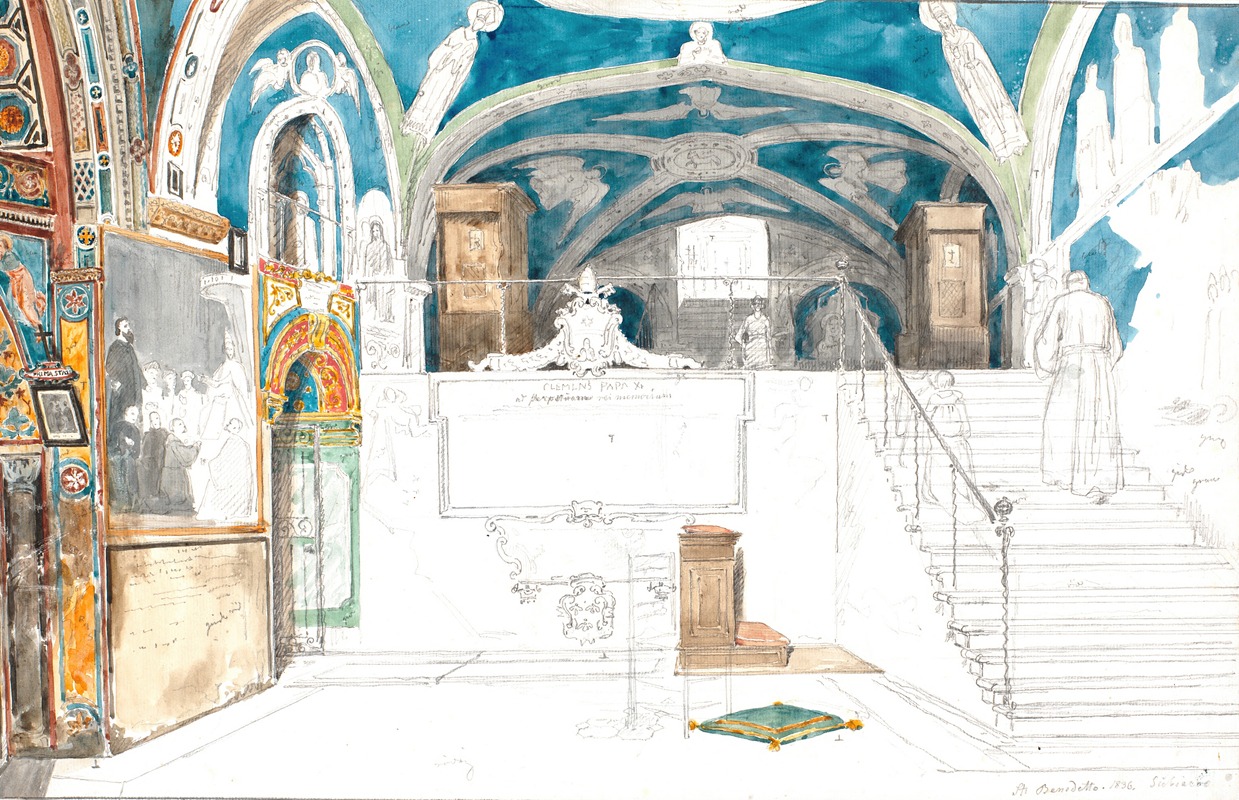
Det indre af klostret S. Benedetto i Subiaco
A hand-painted replica of Martinus Rørbye’s masterpiece Det indre af klostret S. Benedetto i Subiaco, meticulously crafted by professional artists to capture the true essence of the original. Each piece is created with museum-quality canvas and rare mineral pigments, carefully painted by experienced artists with delicate brushstrokes and rich, layered colors to perfectly recreate the texture of the original artwork. Unlike machine-printed reproductions, this hand-painted version brings the painting to life, infused with the artist’s emotions and skill in every stroke. Whether for personal collection or home decoration, it instantly elevates the artistic atmosphere of any space.
Martinus Rørbye's painting "Det indre af klostret S. Benedetto i Subiaco" (The Interior of the Monastery of St. Benedict in Subiaco) is a notable work by the Danish Golden Age artist, created during his travels in Italy. Rørbye, born in 1803 in Drammen, Norway, was a prominent figure in Danish art, known for his detailed and atmospheric landscapes and architectural scenes. His works often reflect his interest in capturing the essence of the places he visited, and this painting is no exception.
The painting depicts the interior of the Monastery of St. Benedict in Subiaco, a historic site located in the Lazio region of Italy. The monastery is renowned for its historical and religious significance, as it is traditionally considered the site where St. Benedict of Nursia, the founder of Western monasticism, lived as a hermit before establishing the Benedictine Order. The monastery itself is perched on the slopes of the Simbruini Mountains, offering a picturesque view of the surrounding landscape.
Rørbye's painting captures the serene and contemplative atmosphere of the monastery's interior. The composition is characterized by its meticulous attention to architectural details, showcasing the artist's skill in rendering space and light. The use of light in the painting is particularly noteworthy, as it streams through the windows, casting soft shadows and highlighting the textures of the stone walls and wooden furnishings. This interplay of light and shadow creates a sense of depth and tranquility, inviting viewers to reflect on the spiritual and historical significance of the setting.
The painting is a testament to Rørbye's ability to convey a sense of place and history through his art. His travels throughout Europe, particularly in Italy, greatly influenced his work, allowing him to explore different cultures and architectural styles. This exposure is evident in the way he captures the unique character of the monastery, blending his Danish artistic sensibilities with the rich cultural heritage of Italy.
Rørbye's work is often associated with the Danish Golden Age, a period in the early 19th century marked by a flourishing of arts and culture in Denmark. During this time, Danish artists, writers, and musicians sought to express national identity and explore new artistic directions. Rørbye, along with his contemporaries, played a significant role in this cultural movement, contributing to the development of a distinct Danish artistic style.
"Det indre af klostret S. Benedetto i Subiaco" is a fine example of Rørbye's artistic achievements during this period. It reflects his keen observational skills and his ability to capture the essence of a place, making it a valuable piece of cultural and historical documentation. The painting not only serves as a visual record of the monastery's interior but also as a reflection of Rørbye's personal journey and artistic evolution.
Today, Martinus Rørbye is celebrated as one of Denmark's most important painters, and his works continue to be studied and admired for their technical excellence and evocative portrayal of 19th-century European life and landscapes. His painting of the Monastery of St. Benedict in Subiaco remains an enduring testament to his talent and his deep appreciation for the places he encountered during his travels.





